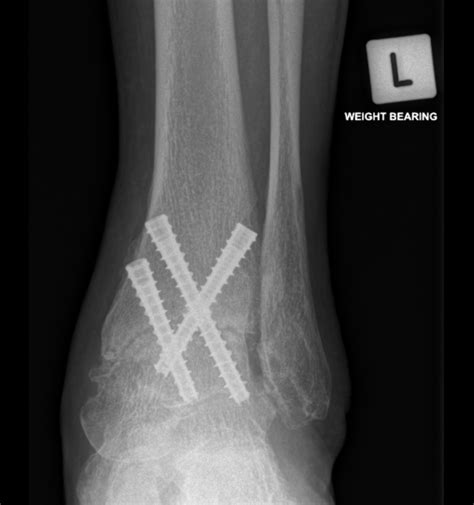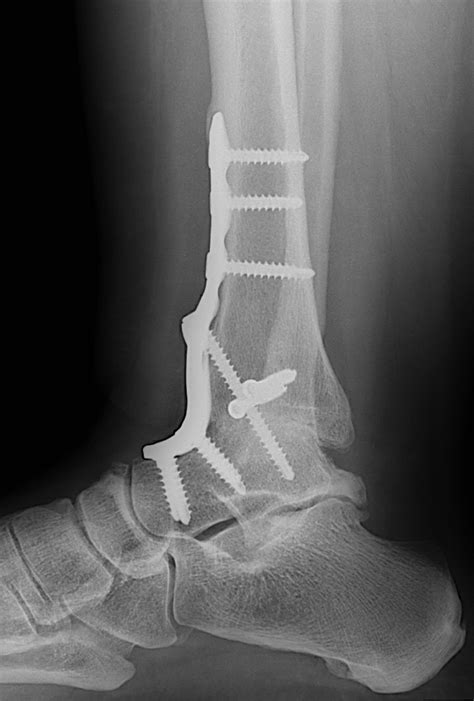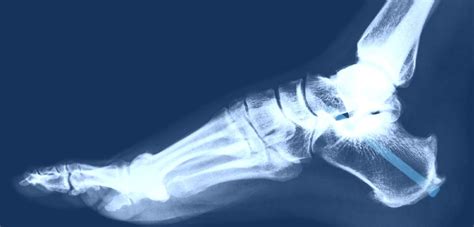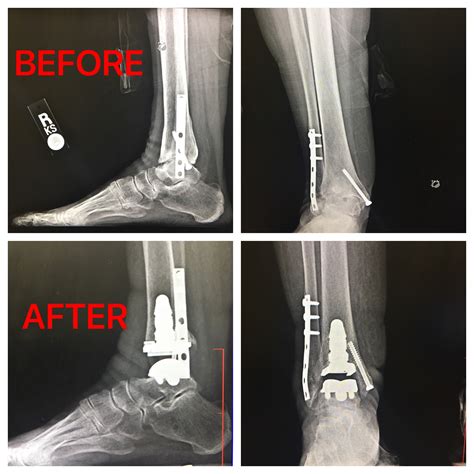Intro
Find relief from ankle pain with ankle fusion surgery, a procedure offering arthritis treatment, joint reconstruction, and orthopedic relief, providing long-term ankle stability and mobility improvement.
Ankle fusion surgery is a type of surgical procedure that is performed to relieve pain and instability in the ankle joint. This surgery is typically recommended for individuals who have severe ankle arthritis, fractures, or other conditions that have not responded to conservative treatments. The goal of ankle fusion surgery is to fuse the bones in the ankle joint together, eliminating pain and improving mobility.
The ankle joint is a complex structure that consists of three bones: the tibia, fibula, and talus. These bones work together to provide stability and support for the body, allowing for a wide range of movements such as walking, running, and jumping. However, when the ankle joint is damaged or diseased, it can lead to chronic pain, stiffness, and limited mobility. Ankle fusion surgery is often considered a last resort, but it can provide significant relief for individuals who have tried other treatments without success.
Ankle fusion surgery is a major procedure that requires careful consideration and planning. The surgery is typically performed under general anesthesia, which means that the patient is asleep during the procedure. The surgeon will make an incision in the ankle and use specialized instruments to prepare the bones for fusion. The bones are then fused together using screws, plates, or other hardware, and the incision is closed. The recovery process can be lengthy, but with proper care and rehabilitation, most patients are able to return to their normal activities within several months.
Ankle Fusion Surgery Benefits

Who is a Candidate for Ankle Fusion Surgery?
Ankle fusion surgery is typically recommended for individuals who have severe ankle arthritis, fractures, or other conditions that have not responded to conservative treatments. Some of the most common conditions that may require ankle fusion surgery include: * Severe ankle arthritis: Ankle fusion surgery may be recommended for individuals who have severe ankle arthritis that has not responded to other treatments. * Fractures: Ankle fusion surgery may be recommended for individuals who have fractures in the ankle joint that are not healing properly. * Instability: Ankle fusion surgery may be recommended for individuals who have instability in the ankle joint, which can lead to chronic pain and limited mobility.Ankle Fusion Surgery Procedure

Ankle Fusion Surgery Recovery
The recovery process for ankle fusion surgery can be lengthy, but with proper care and rehabilitation, most patients are able to return to their normal activities within several months. Some of the most common steps in the recovery process include: * Pain management: The patient is given pain medication to manage any discomfort or pain after surgery. * Immobilization: The ankle is immobilized in a cast or splint to allow the bones to fuse together. * Rehabilitation: The patient undergoes rehabilitation to improve mobility and strength in the ankle joint.Ankle Fusion Surgery Risks and Complications

Ankle Fusion Surgery Alternatives
There are several alternatives to ankle fusion surgery, including: * Ankle replacement surgery: Ankle replacement surgery involves replacing the damaged or diseased joint with an artificial one. * Arthroscopy: Arthroscopy involves using a small camera and instruments to diagnose and treat problems in the ankle joint. * Physical therapy: Physical therapy can help improve mobility and strength in the ankle joint, reducing pain and stiffness.Ankle Fusion Surgery Cost

Ankle Fusion Surgery Insurance Coverage
Ankle fusion surgery is typically covered by insurance, but it is essential to check with your provider to determine the specific coverage and any out-of-pocket costs. Some of the most common insurance providers that cover ankle fusion surgery include: * Medicare: Medicare typically covers ankle fusion surgery for individuals who are 65 or older or have a disability. * Medicaid: Medicaid typically covers ankle fusion surgery for individuals who have a low income or are disabled. * Private insurance: Private insurance providers may cover ankle fusion surgery, but the coverage and out-of-pocket costs can vary depending on the policy.Ankle Fusion Surgery Success Rate

Ankle Fusion Surgery Follow-up Care
Follow-up care is essential after ankle fusion surgery to ensure proper healing and to prevent any complications. Some of the most common steps in follow-up care include: * Pain management: The patient is given pain medication to manage any discomfort or pain after surgery. * Immobilization: The ankle is immobilized in a cast or splint to allow the bones to fuse together. * Rehabilitation: The patient undergoes rehabilitation to improve mobility and strength in the ankle joint. * Follow-up appointments: The patient is scheduled for follow-up appointments with the surgeon to monitor the healing process and to remove any hardware.What is ankle fusion surgery?
+Ankle fusion surgery is a type of surgical procedure that is performed to relieve pain and instability in the ankle joint by fusing the bones together.
Who is a candidate for ankle fusion surgery?
+Ankle fusion surgery is typically recommended for individuals who have severe ankle arthritis, fractures, or other conditions that have not responded to conservative treatments.
What are the benefits of ankle fusion surgery?
+The benefits of ankle fusion surgery include pain relief, improved mobility, increased stability, and reduced risk of arthritis.
What are the risks and complications of ankle fusion surgery?
+The risks and complications of ankle fusion surgery include infection, nerve damage, blood clots, and hardware failure.
How long does it take to recover from ankle fusion surgery?
+The recovery process for ankle fusion surgery can take several months, but with proper care and rehabilitation, most patients are able to return to their normal activities within 3-6 months.
If you're considering ankle fusion surgery, it's essential to discuss the potential benefits and risks with your surgeon. By understanding the procedure, recovery process, and potential outcomes, you can make an informed decision about whether ankle fusion surgery is right for you. Don't hesitate to reach out to your healthcare provider or a qualified surgeon to learn more about ankle fusion surgery and to determine if it's the best course of treatment for your specific condition. Share your thoughts and experiences with ankle fusion surgery in the comments below, and don't forget to share this article with anyone who may be considering this procedure.
